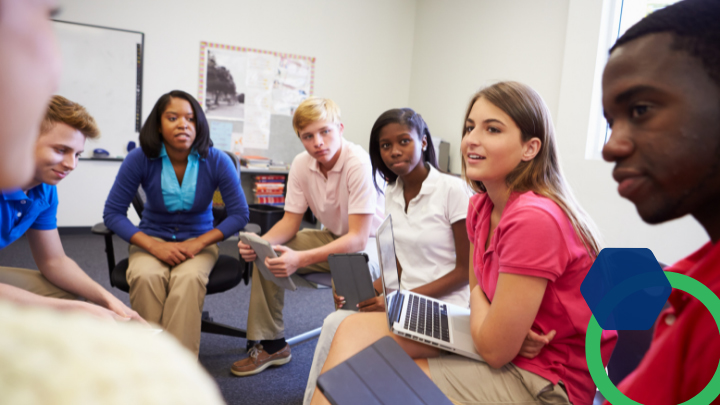Technology has given us access to more data than ever. How can we sort through all of our formative assessment data and turn it into actionable steps to personalize instruction?
The past two years have reminded us of some essential truths about teaching and learning today. Among them are the following for me:
- Technology gives us access to a wealth of possibilities we could not have dreamed of having at our fingertips before
- No amount of technology can replace good teaching
- Human connections are more important than any other element in our schooling equation
- Leveraging learning data to build a growth-oriented classroom culture and to personalize each students’ learning experience can be a huge difference-maker for teachers and students
- The latter is not an easy task or one that can get checked off just by investing in hardware and software.
Sustainable teaching strategies using formative assessment data to personalize instruction should be more accessible to all our teachers, as these strategies present the unique power of being able to help teachers with the following three timely challenges:
- Supporting students to close gaps in a targeted and inclusive way: If daily classroom routines incorporate opportunities to reach mastery at different paces, students are less likely to experience the stress of unfinished learning while continuing to work at or above grade level expectations
- Supporting students’ emotional well-being: When the learning experience is personalized, it is not just good for learning, it is good for relationships and for emotional well-being, two things our teachers and students are working hard toward rebuilding this Fall.
- Supporting educators’ well-being: When teachers and leaders are able to have systems in place allowing them to personalize support, their well-being can increase as they have more positive individualized touch points with their students, and experience fewer classroom management challenges as student ownership and agency increase.
With a less-experienced teaching workforce and many new teachers having learned the art of teaching in front of a computer, instead of a full room of students. We need to support our teachers with deep professional learning experiences, that allow them to see, practice, and experience in their classes what successful teachers do daily to make the magic happen. It cannot just be about the technology tools, as it will always be about how to teach with and without them.
So here are 8 simple, yet powerful, ways to use data to personalize instruction and a video example of each strategy in action in one of our master teachers’ classrooms:
1. Mild-Medium-Spicy Grouping and Choice Boards
Practice does not have to be at only one spice level or focusing on the same skill for everyone, in the same way. When students get to have a voice in the level of the challenge they need to practice at, what they want to practice on and how they want to practice and show mastery, teachers get more engagement out of them, and opportunities to provide the right level of targeted support in the meantime. Choice boards and mild-medium-spicy grouping templates can make this process replicable and manageable over time.
2. Progress and Mastery Tracking
Students can actually love to own their learning data, as long as they are offered a path to set goals with it and be given a chance to show progress over time. Student tracking their own progress data is a proven way to increase student ownership and agency.
3. Battling the Boss
When students are given opportunities to show mastery of concepts at their own pace, their stress level reduces while their true understanding of concepts increases over time. Battling the Boss is an easy way to hold mini-assessments for students working on areas of growth without adding unnecessary grading.
4. W.I.N Time (Whatever I Need Time) and Fill in the Gaps
When we make time and space for students to be able to revisit concepts they need help or extra practice with, teachers win on 2 levels: Learners are able to make progress leveraging multiple forms of support (peer, small group, 1:1 teacher support), and teachers get a chance to slow down and build relationships and a growth mindset culture while personalizing support. W.I.N time and Fill in the Gaps provide structure and resources to support such a space.
5. Targeted Small Group Interventions
The data that most digital assessment platforms make available to teachers is available on the spot and organized in a way that can make targeted small group interventions possible. The skill of using this data to work with a group of students while the rest of the class continues to work is one new teachers in particular often have to learn. What could you do to support your teachers to be comfortable working with groups in a targeted way like Aaron does in the video above?
6. Data Review and Goal Setting 1:1 Conferences
1:1 high dosage tutoring is one of the most effective ways to help students close gaps while benefiting from personalized mentoring. While it is challenging to include this routine during class time, leveraging digital assessment tools and learning platforms effectively can provide opportunities for teachers to embed 1:1 support in their routine daily as Mark does in the video below. Can you imagine the impact on student and teacher well-being when these interactions are made possible? What could you do as a leader to support this practice moving forward?
7. Building a Data Dive Routine
There is so much to celebrate in our students every day, and every time we do we build a stronger culture. Celebrating students with learning data in hands is even more powerful, as praise is more effective when it is grounded in concrete evidence of student work. Holding whole or small group celebrations of student progress, as Mark does in the video above, continuously builds the fabric of your classroom culture, and provides students with an added dose of motivation, as they see that any of their efforts can be noticed.
8. Instant Feedback
Feedback is actionable relationship building in my book. You show students that you see their work and that you care about them enough to provide feedback to them before the grade is in the book. With digital assessment tools, teachers have a data dashboard allowing them to spot misconceptions as students work live in the class. In this video, Jess shows her students that she sees them and that she cares about their success by providing instant feedback.
If you’re interested in the idea of supporting teachers to personalize their instruction, despite or because of the challenges this current school year is presenting us, join us for our Formative Assessment and Differentiation webinar. You can also check out all the strategies available for free on our website in our Formative Assessment and Differentiation focus area.








